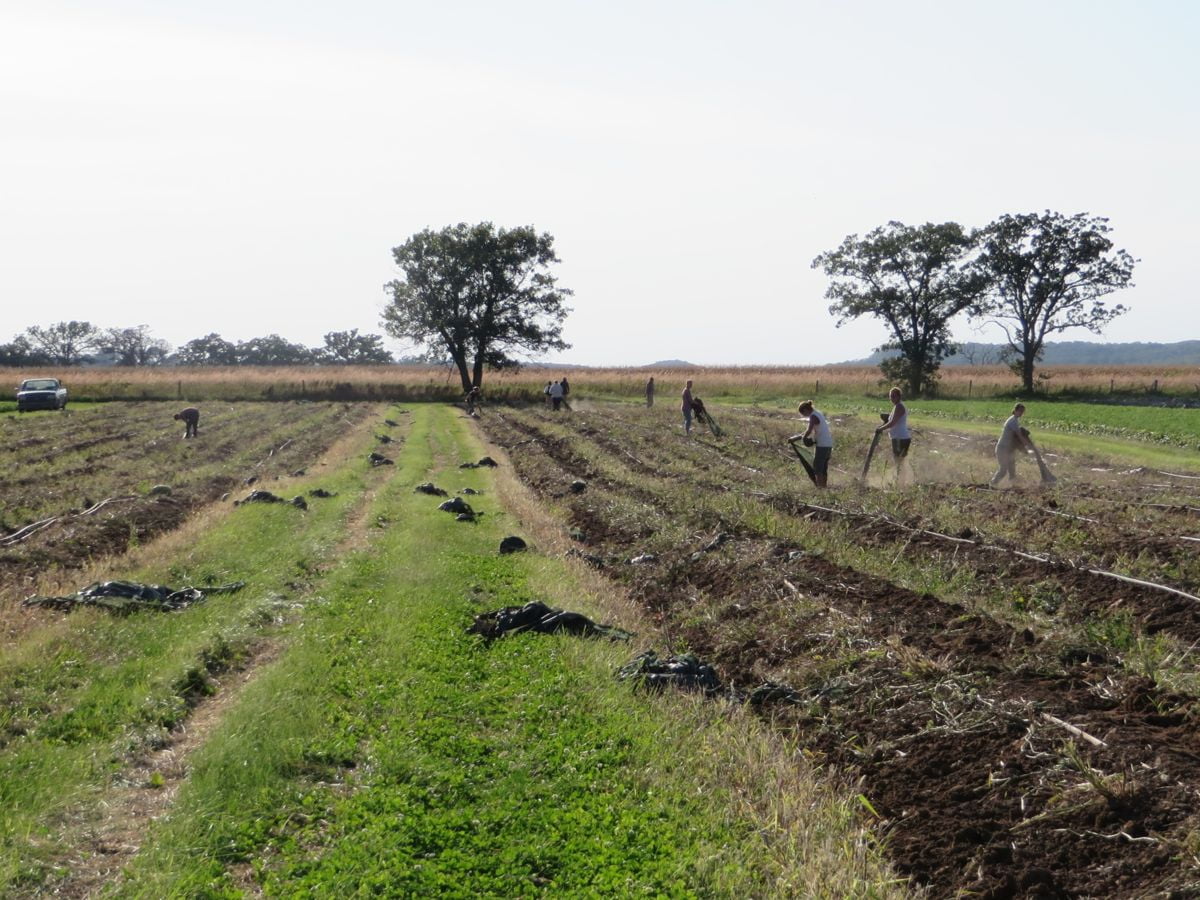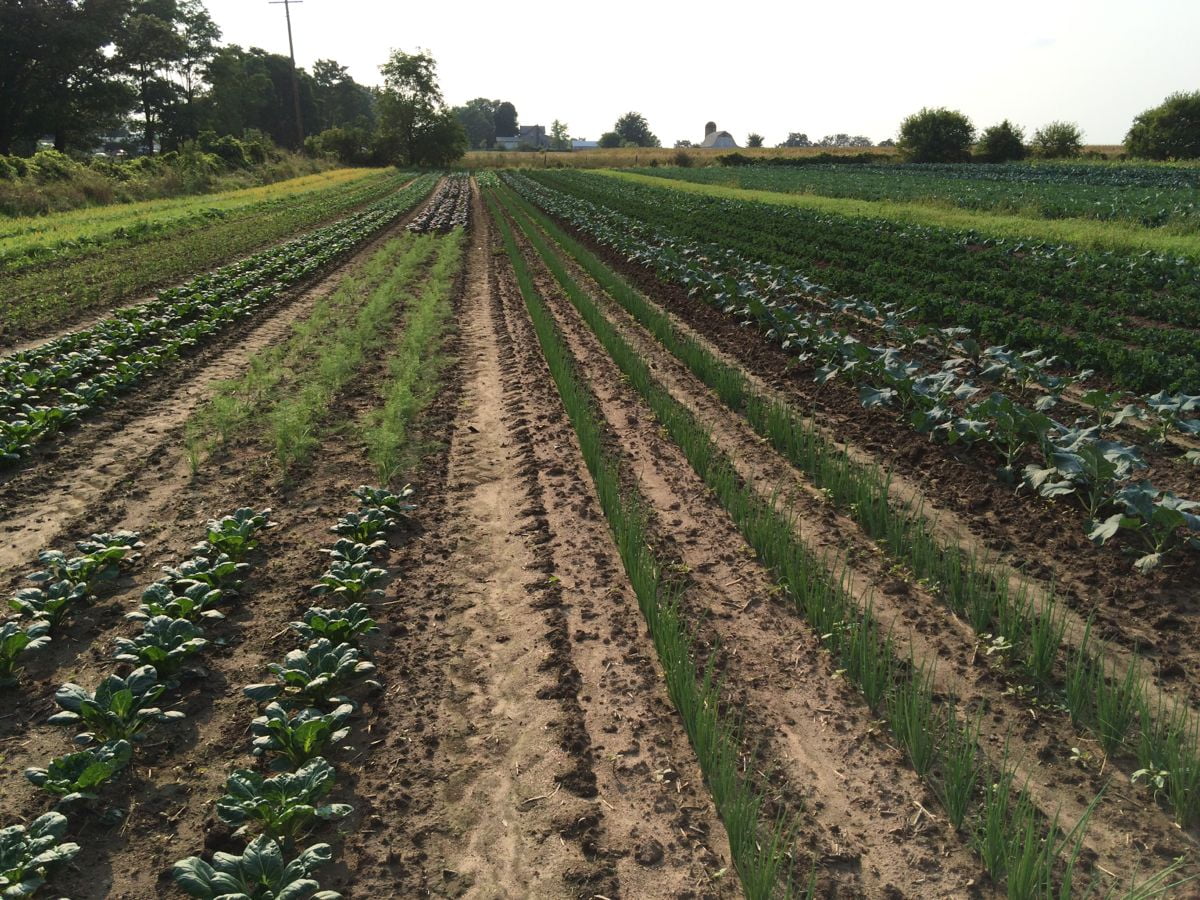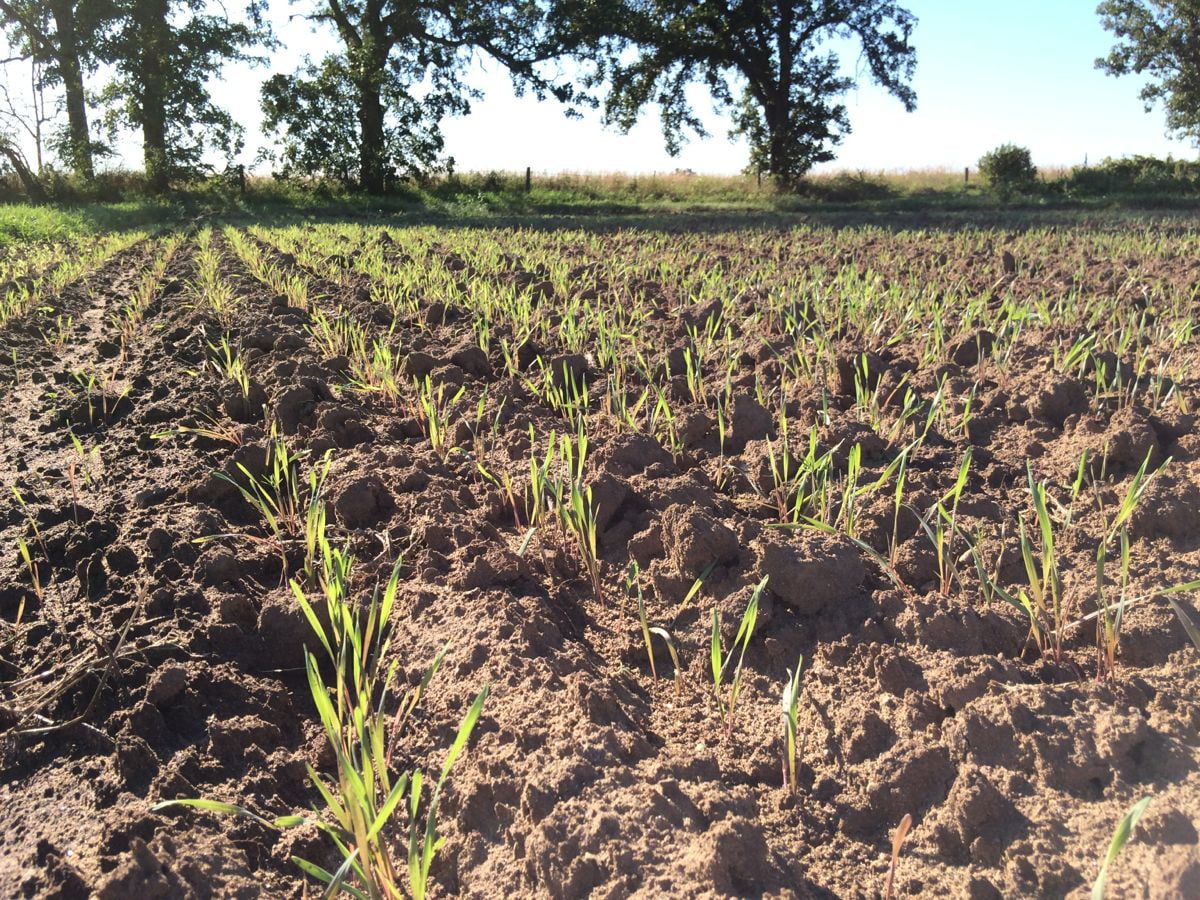Farm news from Steve
- On: September 16, 2015
 0
0
Even with this week’s summer-like temperatures, autumn is creeping into our farm lives.
We’re dismantling fields that we so carefully constructed and tended during the past few months. Acres of worn-out zucchini, cucumber, melon plants are mowed. Thousands of linear feet of plastic mulch are undercut with a simple implement, then pulled up and out of the fields by our crew – a dusty job! The drip irrigation lines that kept these crops growing so well through our dry summer are mechanically wound into compact balls, ready to be recycled. The used plastic mulch is too dirty for recycling, and is destined for our landfill in Janesville.
After these fields are cleared off, a single pass with our strongest tractor and a heavy disc levels the ground, mixing in crop and weed residues, adequate preparation for us to seed a cover crop.
Each week now we’re planting several acres of winter rye (the rye in your rye bread) mixed with hairy vetch. This mixture makes 6-8 inches of growth this fall, enough to cover the ground, minimizing erosion and moderating soil temperatures through the winter. At the first hint of spring, the rye will green up and resume growing, capturing a large amount of carbon from the air. The vetch restarts a bit later, and, as a legume, fixes atmospheric nitrogen into a form that soil microbes, and then our crop plants, can use for growth.
These cover crops, planted this week, are a foundation for our farm’s success next year. We keep the cycle going. Steve

Pulling up plastic mulch on a beautiful fall day.

The fall crops are growing well. There’s lots yet to harvest.

Cover crops are up! The rye seedlings look fragile but will form a dense mat before winter arrives.
Veggie List and Veggie Notes (Sept. 17/18, 2015, week #18, green EOW)
Updated 9/17/15
Here is our best guess of what will be in the box. Do not be surprised if your box does not contain everything on the list. There are many large vegetables this week, and we will fit as many as we can in each box.
Green cabbage, 1
Lacinato kale, 1 bunch
Slicing tomatoes, 4 lb
Colored bell pepper, 1
Orano peppers, about 2
Poblano chiles, 2
Yellow onions, about 2
Thai basil, 1 bunch
Garlic
Broccoli, 1 large or 2 small heads
Sweet dumpling OR delicata squash, 1 or 2
Everyone will receive two+ items from this list:
Celery OR eggplant OR extra broccoli OR an heirloom tomato
Next week’s box will probably contain potatoes, broccoli, Italian beans, leeks, tomatoes, peppers of some sort, garlic and more.
Slicing tomatoes – Keep a close watch on your tomatoes this week. They look and taste good but might not store for long. It’s that time of year. Eat them promptly, or refrigerate once ripe.
Celery – Our celery is strongly flavored and more fibrous than typical grocery store celery. Check the middle of the head – it may need trimming. We continue to tinker with our one annual celery planting, attempting to find the right fall harvest window. We planted it late enough to mature in fall, and be more tender than celery harvested during the summer. It sort of worked. This celery is more tender than in other years. However, planting later created more opportunity for insect attack. Look it over, taste it raw, and decide how you want to use it.
Poblano chiles (dark green, shiny, triangular) – These chiles have low-to-medium heat and great flavor. Most I’ve cooked so far this year are milder than usual, but a few were corkers.
Sweet Dumpling winter squash (round, speckled green and white or yellow) – This is one of our most flavorful winter squashes and a personal favorite. Sweet Dumpling are one of the first winter squash types ready to eat in fall. These will not store for long so eat them soon.
Storage: Store all winter squash at room temperature.
Preparation: These squash have a central cavity that can be stuffed if you wish. Cut squash in half, scoop out and discard the seeds. To cook, I place the cut squash face-down on a cookie sheet, then put some water in the pan, and roast at 400 oF until easily pierced with a fork. The water in the pan is optional. The flavor is best if you allow the pan to dry during the cooking, so the squash has a chance to caramelize.
Thai basil – This is the same Thai variety we sent a few weeks ago, chosen for how well it holds up to a late summer disease. We like this basil! The flavor is excellent. There’s a mild hint of anise, without bitterness. This is a strong basil so try using half the amount you would add when using Italian basil. Taste and add more if you wish.
THIS WEEK’S RECIPES
Comforting Classics
Chicken and Andouille Gumbo or Red Bean Gumbo
Marcella Hazan’s Tomato Sauce with Butter and Onion
Sage Rubbed Roasted Sweet Dumpling Squash with Onions and Craisins
Fish Taco with Shredded Poblano and Cabbage in Chipotle Crema
Wilted Kale with Bacon and Vinegar (Vegetarians and non-bacon eaters — click through for award winning variation with no bacon!)
Yogurt Eggplant Spread
Outside the Box Recipes
Bloody Mary Salad
Baked Eggplant, Peppers and Tomatoes with Almonds
Curried Chickpea and Quinoa Stuffed Squash
Indian Coleslaw
Grilled Lacinato Kale
Burnt Eggplant and Israeli Couscous Soup
Kitchen Sink Recipe
Quick and Easy Meal Idea



